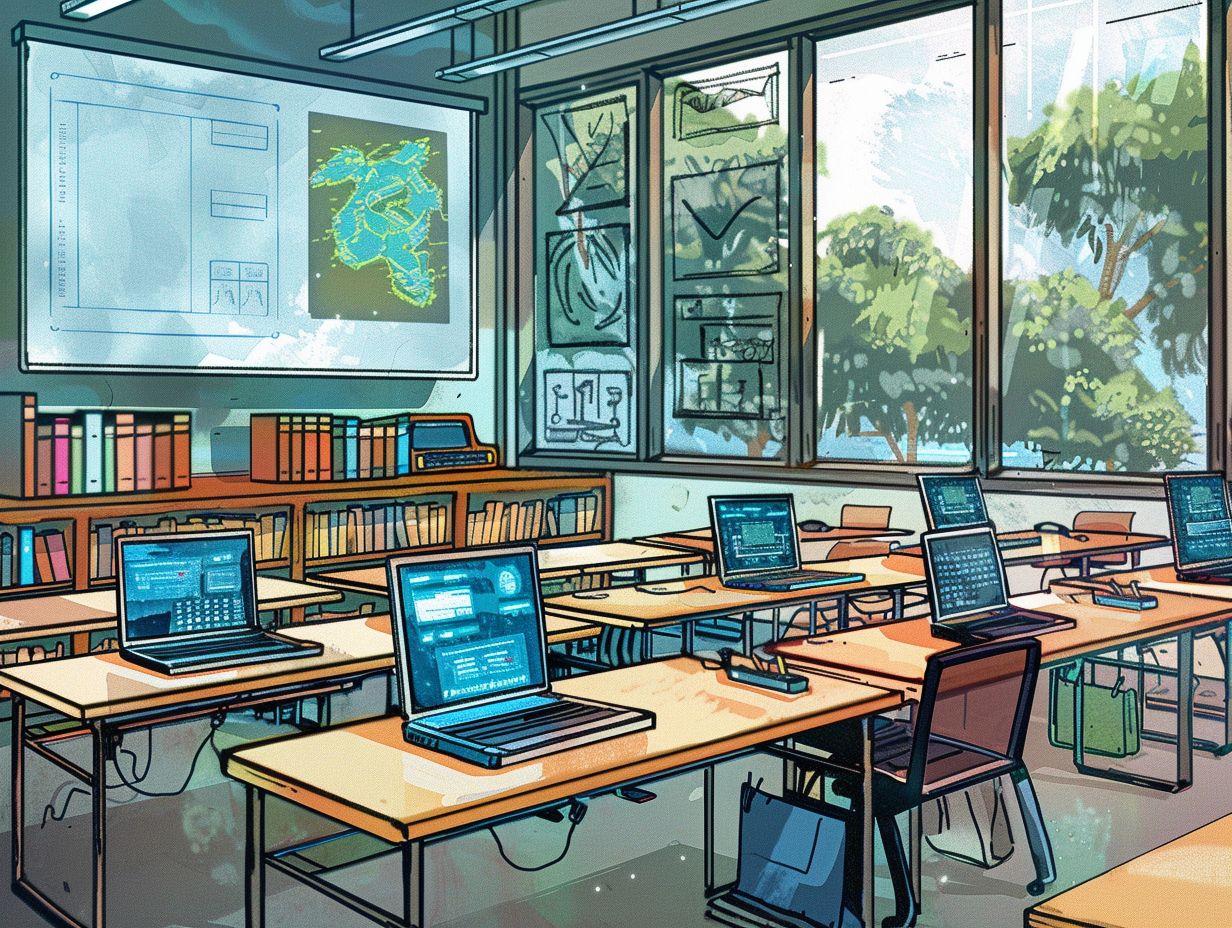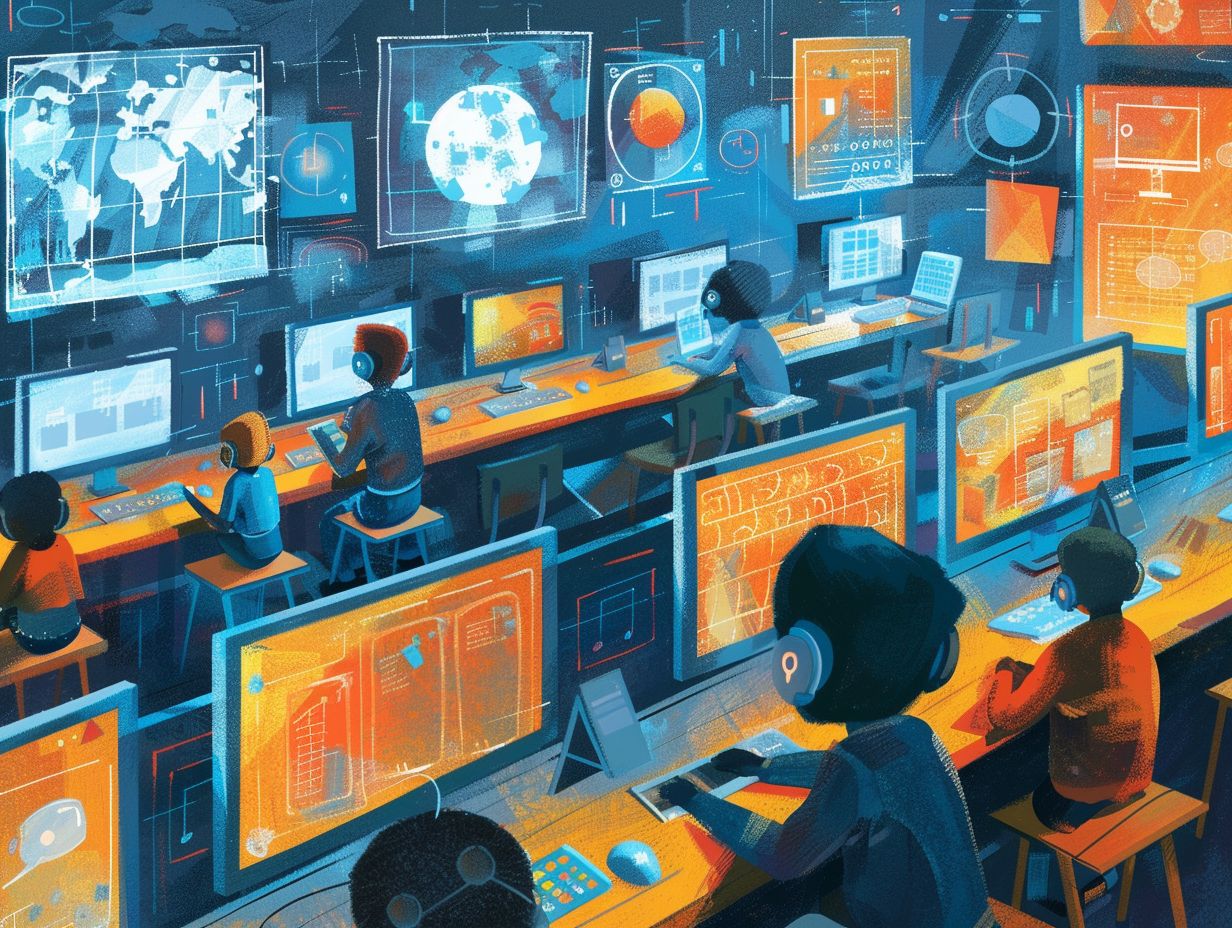You have experienced how blended learning has transformed the education sector, especially in technical fields, by integrating traditional classroom teaching with online learning elements.
You will now examine the definition and elements of blended learning, its relevance in technical education, and the benefits it provides for both students and educators.
Blended learning offers a variety of advantages, including increased engagement and learning results, as well as improved teaching methods and adaptability.
You will also investigate the top strategies for incorporating blended learning into technical education and discuss the typical obstacles encountered in this innovative learning method.
Key Takeaways:

Understanding Blended Learning
Blended Learning combines traditional face-to-face classroom instruction with online learning components to enhance the educational experience for students. This approach offers a flexible methodology that incorporates technology to deliver course materials and engage students in both physical classrooms and virtual platforms.
This approach allows you, as a student, to access learning materials and resources at your own pace, fostering a personalized learning experience. By integrating distance learning tools, educators are able to create interactive and multimedia-rich content that caters to various learning styles.
Blended Learning promotes collaboration among students through online discussions and group projects, cultivating a sense of community and peer-to-peer interaction. Additionally, it enables teachers to more effectively track student progress and provide timely feedback, ultimately leading to improved learning outcomes.
Definition and Components
The Definition of Blended Learning involves creating a cohesive learning experience that seamlessly integrates traditional classroom interactions led by teachers with digital resources and online assessments to monitor student progress effectively.
Teachers play a crucial role in implementing Blended Learning by designing engaging lesson plans that combine in-person instruction with multimedia elements and interactive online activities. They need to adapt their teaching methods to cater to different learning styles and ensure that students are actively involved in both physical and virtual learning environments. Teachers must effectively utilize a variety of educational resources such as videos, simulations, and online discussion forums to enhance the overall learning experience for students. By employing diverse assessment strategies like quizzes, projects, and peer evaluations, teachers can accurately gauge student understanding and provide targeted support where needed.
The Role of Blended Learning in Technical Fields
Blended Learning plays a significant role in Technical Fields such as Career and Technical Education (CTE) courses by providing a dynamic learning environment that combines practical skills training with theoretical knowledge. The integration of specialized curricula like iCEV curriculum enhances the educational experience for students who can benefit from hands-on learning.
Through the use of digital resources and interactive platforms, Blended Learning enables students to engage in real-world simulations, virtual labs, and industry-relevant projects. This unique approach not only equips learners with practical skills but also ensures they grasp the underlying concepts. The educational journey of students exemplifies the effectiveness of Blended Learning in CTE; starting with basic modules, they progress to advanced levels, gaining both theoretical insights and hands-on experience along the way. Such personalized pathways cater to individual learning styles and pace, fostering success in technical fields.
Advantages for Technical Education
Blended Learning offers you several advantages for Technical Education, including personalized and individualized learning experiences that cater to diverse student needs. This approach enhances skill development and fosters a more hands-on approach to acquiring technical competencies.
By combining traditional classroom instruction with online resources and practical hands-on training, Blended Learning allows you to apply theoretical knowledge in real-world scenarios. You, as a student in a technical field, benefit from this approach as you can develop practical skills through interactive projects and simulations, preparing you for the demands of the workforce. The flexibility of Blended Learning enables you to learn at your own pace and receive personalized feedback, ensuring a more tailored learning experience that meets your specific learning styles and goals.
Benefits of Blended Learning for Students

Blended Learning offers you, as a student, numerous benefits, such as increased engagement through interactive learning activities, the ability to effectively track your progress, and the flexibility to access course materials at your convenience. This approach can enhance your motivation and promote self-paced learning.
You will find that the interactive elements in blended learning keep you more engaged with the course material, as you actively participate in your own learning process. The ability to monitor your progress give the power tos you to take charge of your learning journey, setting goals and tracking achievements along the way. Additionally, the flexibility to access educational resources at any time allows you to fit your studies around your schedule, leading to a more balanced and effective approach to learning.
Improved Engagement and Learning Outcomes
Blended Learning contributes to improved student engagement and enhanced learning outcomes by combining traditional classroom instruction with interactive online training modules. This approach enriches the educational experience by providing students with diverse learning opportunities that cater to different learning styles.
By incorporating digital tools and resources, you are give the power toed to take more control over your learning journey and pace. The flexibility offered by blended learning allows you to review materials at your own convenience, reinforcing understanding and retention of key concepts. The interactive nature of online components keeps you actively involved in your education, fostering a deeper level of engagement. This combination of traditional and modern teaching methods not only motivates you to learn but also equips you with essential skills such as digital literacy and self-directed learning.
Benefits of Blended Learning for Instructors
Blended Learning offers significant benefits for instructors, give the power toing you to leverage technology to deliver engaging and interactive lessons both in the traditional classroom setting and through online platforms. You can create a dynamic learning environment that combines face-to-face interactions with digital resources to cater to diverse student needs.
By incorporating technology into your teaching strategies, you can better track student progress, provide personalized feedback, and facilitate collaborative discussions among students. With the flexibility of blending in-person and virtual instruction, you have the opportunity to cater to different learning styles and preferences. The integration of online tools allows you to access a wide range of resources and multimedia content to enhance the overall learning experience and make lessons more interactive and stimulating for students.
Enhanced Teaching Strategies and Flexibility
Utilizing Blended Learning give the power tos instructors like you to enhance teaching strategies through the incorporation of educational technologies, such as Learning Management Systems (LMS) and EdTech tools, into the curriculum. This approach offers you the flexibility to create interactive lessons, monitor student progress, and personalize learning experiences.
By integrating technology into your teaching methods, you can create a more dynamic and engaging learning environment for your students. EdTech tools enable you to vary assessment methods, accommodating diverse learning styles and preferences. Through the use of Learning Management Systems, you can conveniently track student performance, provide timely feedback, and customize instruction to meet individual needs. The flexibility of blended learning allows you to seamlessly integrate traditional classroom teaching with online resources, promoting a student-centered approach to education.
Implementing Blended Learning in Technical Education
When implementing Blended Learning in Technical Education, you need to utilize a combination of resources, which includes online training modules, practical assessments, and hands-on training sessions. This approach can enhance the training experience for students by providing a comprehensive learning environment that integrates theoretical knowledge with practical application.
To successfully implement Blended Learning in Technical Education, you must focus on leveraging diverse resources such as multimedia content, interactive simulations, and virtual labs. It is crucial to develop customized assessment methods tailored to technical subjects to effectively measure student progress. Additionally, specialized training modules can further enhance the learning process by addressing specific technical skills and industry trends.
Hands-on experiences are essential in reinforcing theoretical concepts. They allow students to apply their knowledge in real-world scenarios, helping them develop practical expertise.
Best Practices and Tips

Incorporating best practices and tips for Blended Learning in Technical Education involves monitoring student progress effectively, providing individualized support to enhance skill development, and fostering a collaborative learning environment that promotes knowledge sharing among students.
Tracking student progress is essential for identifying areas where students may need additional assistance and assessing the overall effectiveness of the blended learning approach. By monitoring their advancement, educators can tailor support and resources to address specific needs, ensuring that each student receives personalized attention for skill enhancement.
Encouraging collaborative learning experiences further enriches the educational journey by allowing students to learn from each other’s strengths and perspectives, fostering a sense of community and shared knowledge. Utilizing strategies such as group projects, peer evaluations, and online forums can optimize these benefits, creating a dynamic and engaging learning environment for technical skill development.
Overcoming Challenges in Blended Learning
While you explore the benefits of Blended Learning, you may encounter challenges that must be effectively addressed by educators. Overcoming these challenges necessitates a proactive approach to maximize the advantages of integrating technology into education and capitalize on the benefits of personalized learning experiences.
One common challenge encountered when implementing Blended Learning is the resistance to change from some teachers and students who are accustomed to traditional teaching methods. To tackle this issue, schools can offer professional development and training sessions to help educators become more comfortable with incorporating technology into their teaching practices. Providing continuous support and guidance can encourage students to embrace the blended approach.
Maintaining a balance between traditional face-to-face interactions and online resources is essential for successful implementation. By merging the strengths of both methods, educators can establish dynamic and engaging learning environments that cater to a variety of learning styles and preferences.
Addressing Common Concerns
Addressing common concerns in Blended Learning involves evaluating your progress regularly, ensuring flexibility in course delivery to accommodate different learning styles, and implementing varied assessment methods to measure your performance accurately.
By adopting a proactive approach towards monitoring your progress, you can identify areas where additional support or personalized instruction may be necessary.
Flexibility in curriculum delivery allows you to engage with the material in ways that resonate with you, promoting deeper understanding and retention.
Diversifying assessment techniques, such as incorporating project-based assessments or peer evaluations, can provide a more holistic view of your learning. When these concerns are effectively addressed, you can experience a more tailored and engaging learning journey that caters to your individual needs and preferences.
Frequently Asked Questions
What is blended learning?
Blended learning is an educational approach that combines traditional face-to-face instruction with online learning activities.
What are the benefits of blended learning in technical fields?

Blended learning allows for a more flexible and personalized learning experience, which is particularly beneficial in technical fields where students may have varying levels of prior knowledge or learning styles.
How does blended learning save time and money?
By incorporating online learning components, blended learning reduces the need for physical classroom space and materials, and also allows for more efficient use of instructors’ time.
What are some ways that blended learning can enhance technical skills?
Blended learning provides opportunities for students to practice and apply technical skills in real-world scenarios, as well as access to a variety of online resources and tools for further learning and practice.
Can blended learning improve student engagement and motivation?
Yes, blended learning can boost student engagement and motivation by offering a more interactive and dynamic learning experience compared to traditional, lecture-based instruction.
How does blended learning support the development of critical thinking skills?
The combination of online and face-to-face learning allows for more active learning and problem-solving activities, which can help students develop critical thinking skills necessary for success in technical fields.
